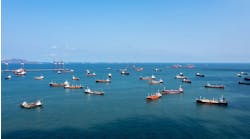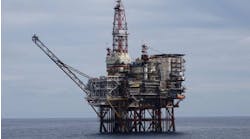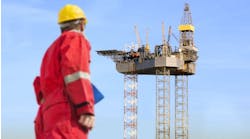Over 230 exploration and appraisal wells were drilled across the Asia-Pacific region in 2005 - a healthy increase on 2004, according to an analysis for Offshore by Wood Mackenzie. Year-on-year drilling levels rose sharply in Malaysia and Myanmar, Wood Mackenzie found, while other countries largely maintained the well numbers achieved in 2004. Regionally, the level of E&A drilling continues to recover steadily toward the high levels seen in the late 1990s and in 2001.
Activity was driven by an increase in awards offshore China, Malaysia, and the Philippines. Awards of deepwater blocks in Malaysia continue because of recent exploration success, while in China awards were dominated by those in the Pearl River Mouth basin.
Licensing activity also increased in Vietnam, including the award of the country’s first deepwater blocks in the Phu Khanh basin.
Offshore Sabah maintained its position as the region’s exploration hotspot with another “big cat” discovery on the Ubah field, which is estimated to contain at least 500 MMbbl of oil reserves.
See their full report beginning onpage 40.
• • •
Meanwhile, new exploration and production projects continue to take shape in the Asia-Pacific area, as operators develop oil and gas resources for the expanding economies there.
That’s the conclusion ofPam Boschee, International Editor, in her analysis beginning on page 50.
China National Offshore Oil Corp., for example, is optimistic about exploration in deepwater block 29/26, where it stands to gain up to a 51% interest in the event of a commercial discovery. Husky Energy plans a well in 1,500 m in the South China Sea at the end of April. The drilling is expected to require 45 days. The deepwater block is one of 12 for which Cnooc invited public bidding in 2002. Covering an area of 3,965 sq km, the contract block has a water depth between 300 and 2,000 m.
Meanwhile, Thailand’s Energy Ministry recently awarded concessions for three offshore blocks to and is offering a total of 82 blocks covering 440,704 sq km.
• • •
Finally, the pace of exploration and development activity has accelerated in deepwater Australia, especially offshore Western Australia. And there are significant new opportunities for investment in deepwater exploration in the upcoming 2006 release of offshore acreage, scheduled for May. That’s the finding ofDr. Marita Bradshaw of Geoscience Australia, in her report prepared for this issue. It begins on page 98.
Significant recent deepwater discoveries off Australia include the super-giant Jansz gas field (2000, in 1,321 m of water), the Enfield (1999, 544 m), Laverda (2000, 840 m), Stybarrow (2003, 825 m) oil accumulations, and the Pluto gas field (2005, 976 m).
Woodside’s Enfield development is under construction with first oil expected in 2006, and Pluto LNG has been granted major project facilitation status by the federal government with first export cargo scheduled for late 2010.
This environment has translated into lively bidding for recent deepwater acreage in the 2004 and 2005 rounds, says Bradshaw, but given the size of offshore Australia, large prospective areas remain to be offered in the 2006 release. The area of Australia’s marine jurisdiction around the mainland and its island territories, at over 12 million sq km, is larger than the size of onshore Australia, and much of it is underlain by sedimentary basins.
In summary, the Asia-Pacific region is picking up steam and promises to continue its high growth in deepwater exploration and production. It shows signs of being the next major significant deepwater play, where large reserves seem to be found these days.


